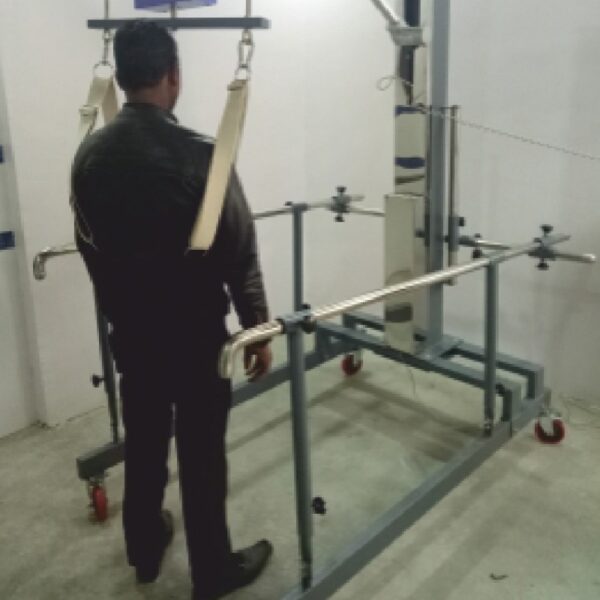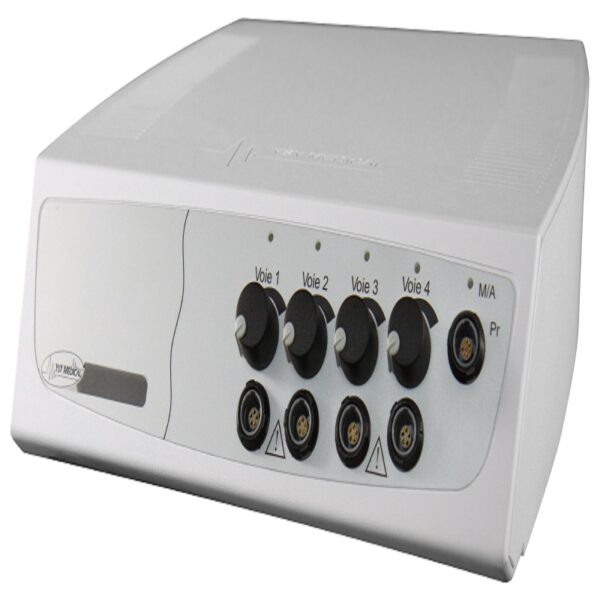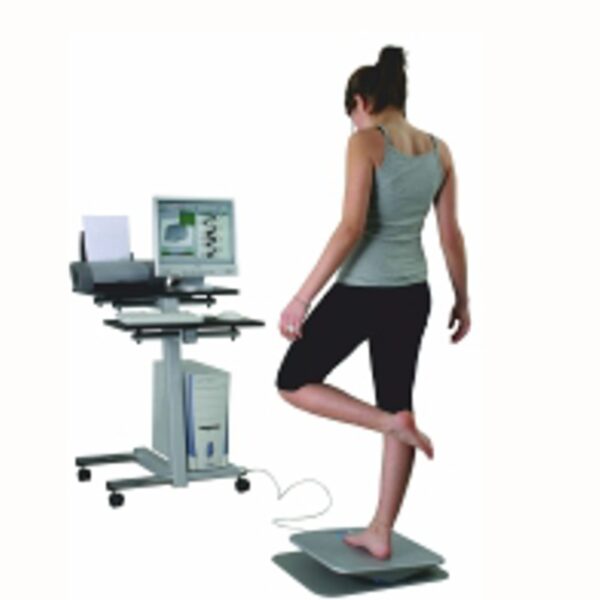BMI – 1252 i – MOTION
BMI – 1253 APT HI – LO DELUXE
BMI 1001 UNWEIGHING SYSTEM (MOBILITY TRAINER) – Uses
BMI 1023 EMG BIOFEEDBACK With Stimulator
BMI 1023 EMG BIOFEEDBACK With Stimulator - used to give a person information about thier body. Physical therapists can use a biofeedback machine that specifically measures muscle activity. This is called electrical myography or EMG biofeedback. It is useful in retraining muscles following surgery, disuse or a period of muscular dysfunction.
BMI 1119 Electronic Balance Board
BMI- 1235 Functional Electrical Stimulator FES
Robotic Exoskeleton Gait Therapy
Who will benefit from “exorehabillitation”? • Patients recovering from stoke with mobility issues; • Patients after a traumatic brain injury with mobility issues; • Patients with traumatic injury of the spine; • Patients with gait pathologies due to musculoskeletal system disorders; • Patients with cerebral palsy and multiple sclerosis with mobility issues. Technical specifications of the E-Helper exoskeleton: • 8 hours of autonomous operation; • Patient weight up to 110 kg, height – 150-190 cm; • Ability to climb stairs, turn around; • Reducing motors with added durability; • Does not require costly annual servicing; Use of a E-Helper in conjunction with reaterra treadmill U Reduces workload for the medical staff. • Increases the safety of rehabilitation process. Two options for use: 1.Patient wearing an exoskeleton is freely positioned on the treadmill with off-loading of the body weight. 2.Exoskeleton can be affixed on the treadmill, which makes this system similar in its capabilities to Lokomat system (with options for separate regulation of the motor power). • Treadmill operate in two direction backward and forward • Treadmill speed start from 0.1km/h to 20km/h • Treadmill is operated with LCD touch display • Wheel chair ramp Joint use with FESJoint use of E- Helper Use the 8-chanel electrostimulation and electromyography system in combination with the exoskeleton for an increased efferent stimulation and improvement of neural plasticity (the system contains sensors that detect position; therefore, the system performs electrostimulation during the necessary walking phase).
Robotic Exoskeleton Gait Therapy
Who will benefit from “exorehabillitation”? • Patients recovering from stoke with mobility issues; • Patients after a traumatic brain injury with mobility issues; • Patients with traumatic injury of the spine; • Patients with gait pathologies due to musculoskeletal system disorders; • Patients with cerebral palsy and multiple sclerosis with mobility issues. Technical specifications of the E-Helper exoskeleton: • 8 hours of autonomous operation; • Patient weight up to 110 kg, height – 150-190 cm; • Ability to climb stairs, turn around; • Reducing motors with added durability; • Does not require costly annual servicing; Use of a E-Helper in conjunction with reaterra treadmill U Reduces workload for the medical staff. • Increases the safety of rehabilitation process. Two options for use: 1.Patient wearing an exoskeleton is freely positioned on the treadmill with off-loading of the body weight. 2.Exoskeleton can be affixed on the treadmill, which makes this system similar in its capabilities to Lokomat system (with options for separate regulation of the motor power). • Treadmill operate in two direction backward and forward • Treadmill speed start from 0.1km/h to 20km/h • Treadmill is operated with LCD touch display • Wheel chair ramp Joint use with FESJoint use of E- Helper Use the 8-chanel electrostimulation and electromyography system in combination with the exoskeleton for an increased efferent stimulation and improvement of neural plasticity (the system contains sensors that detect position; therefore, the system performs electrostimulation during the necessary walking phase).











